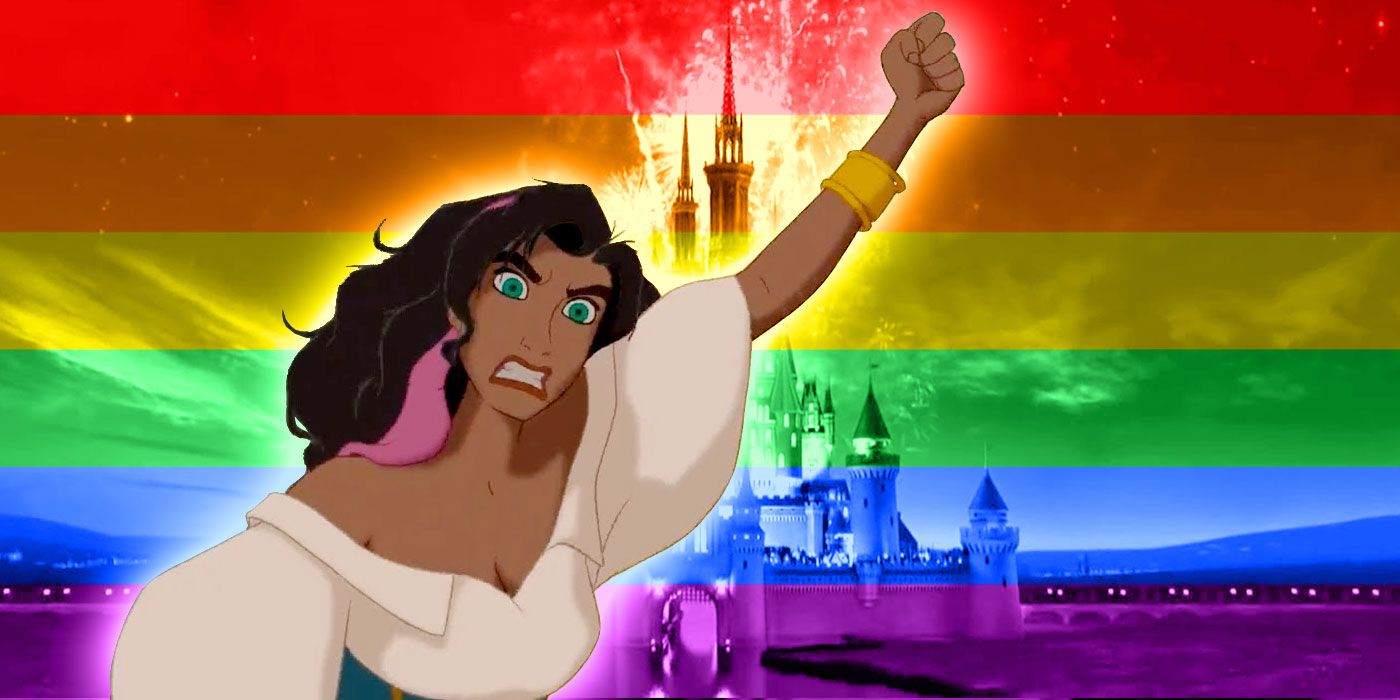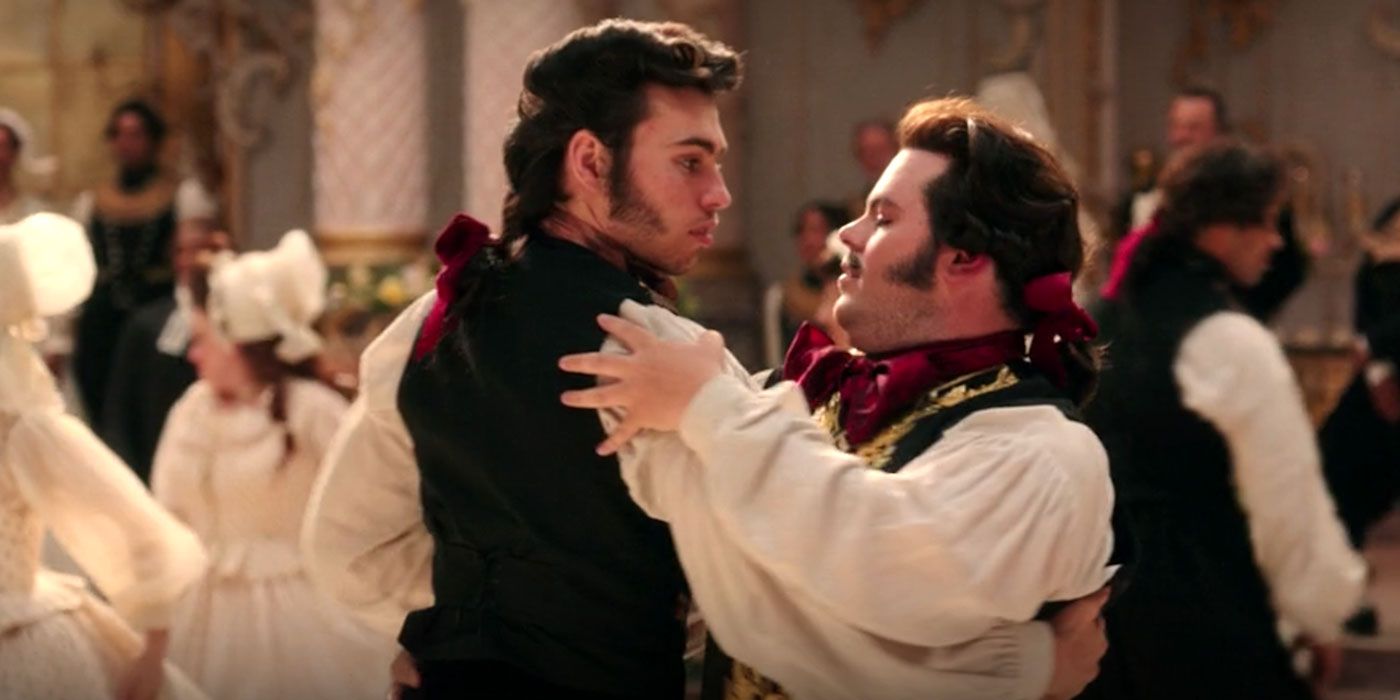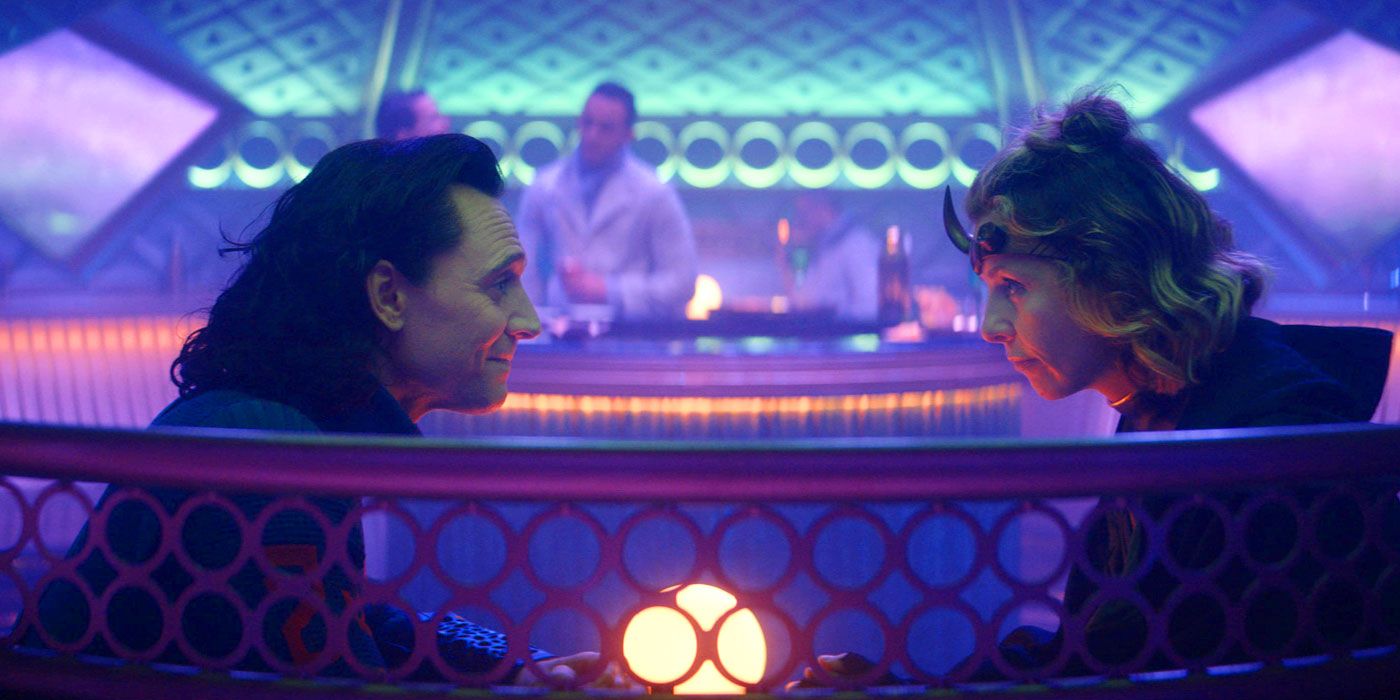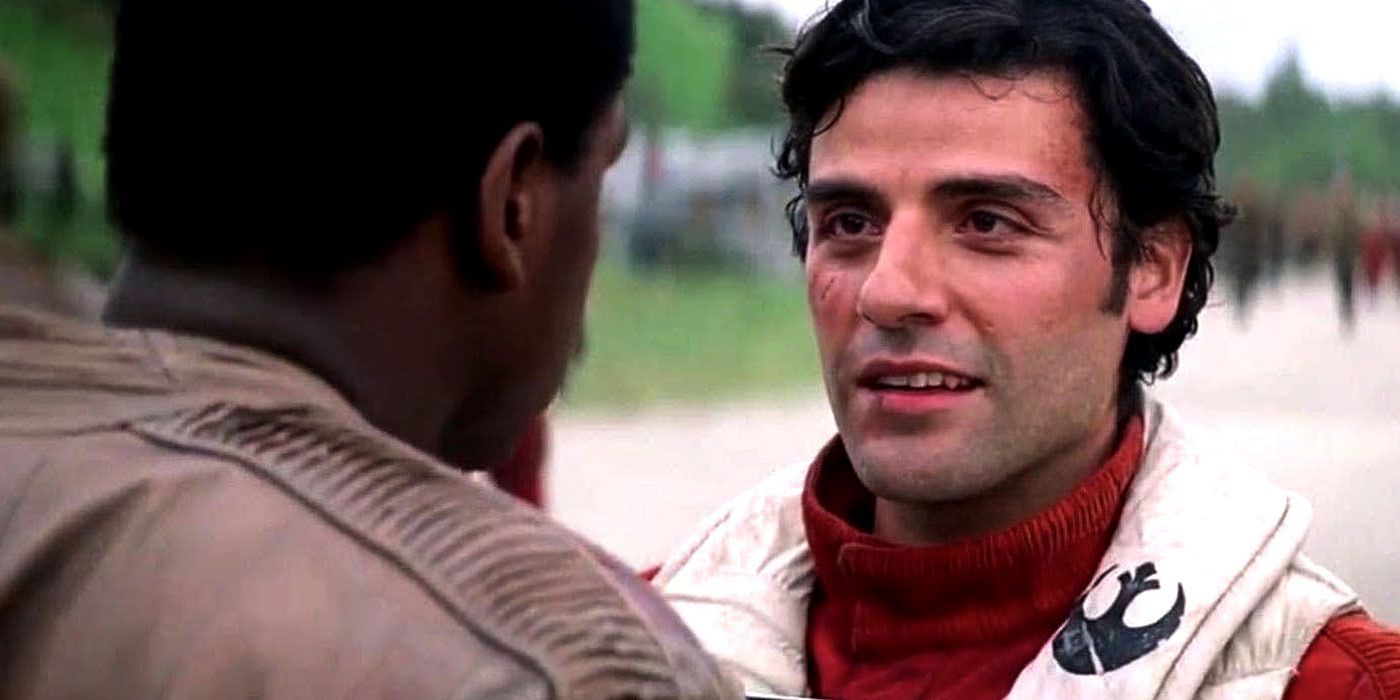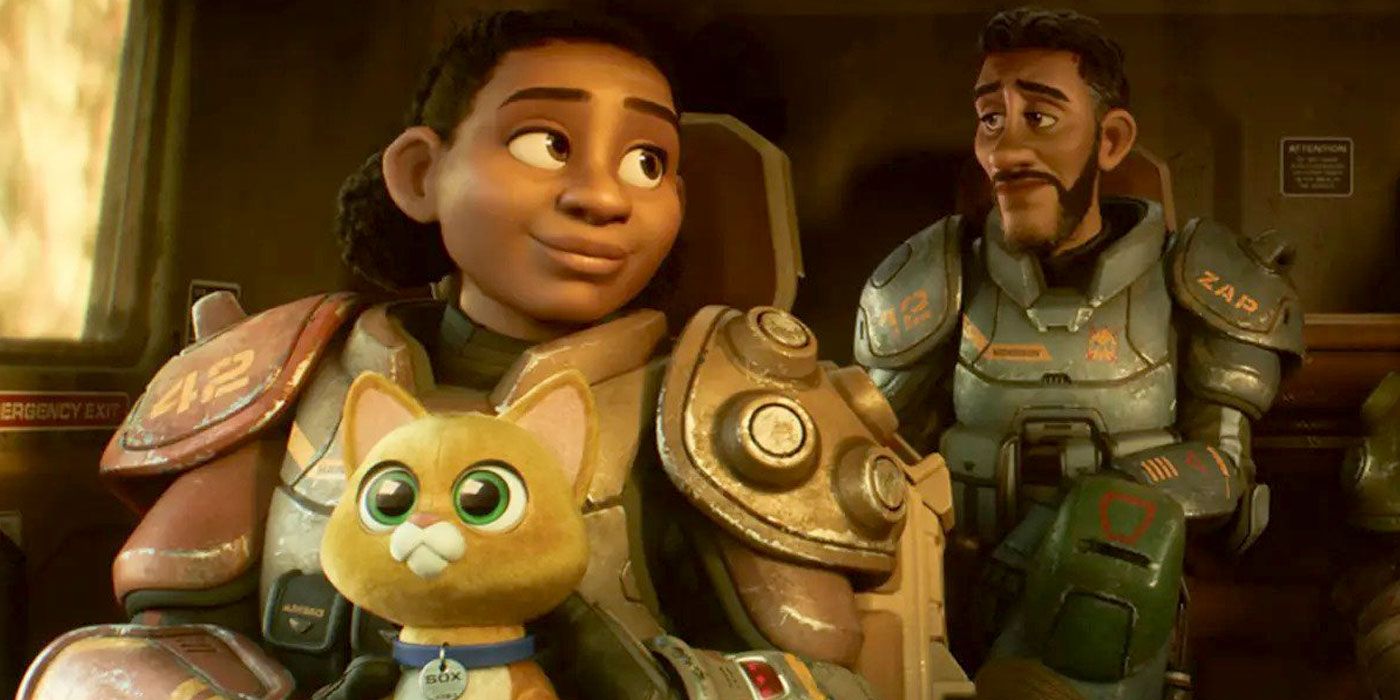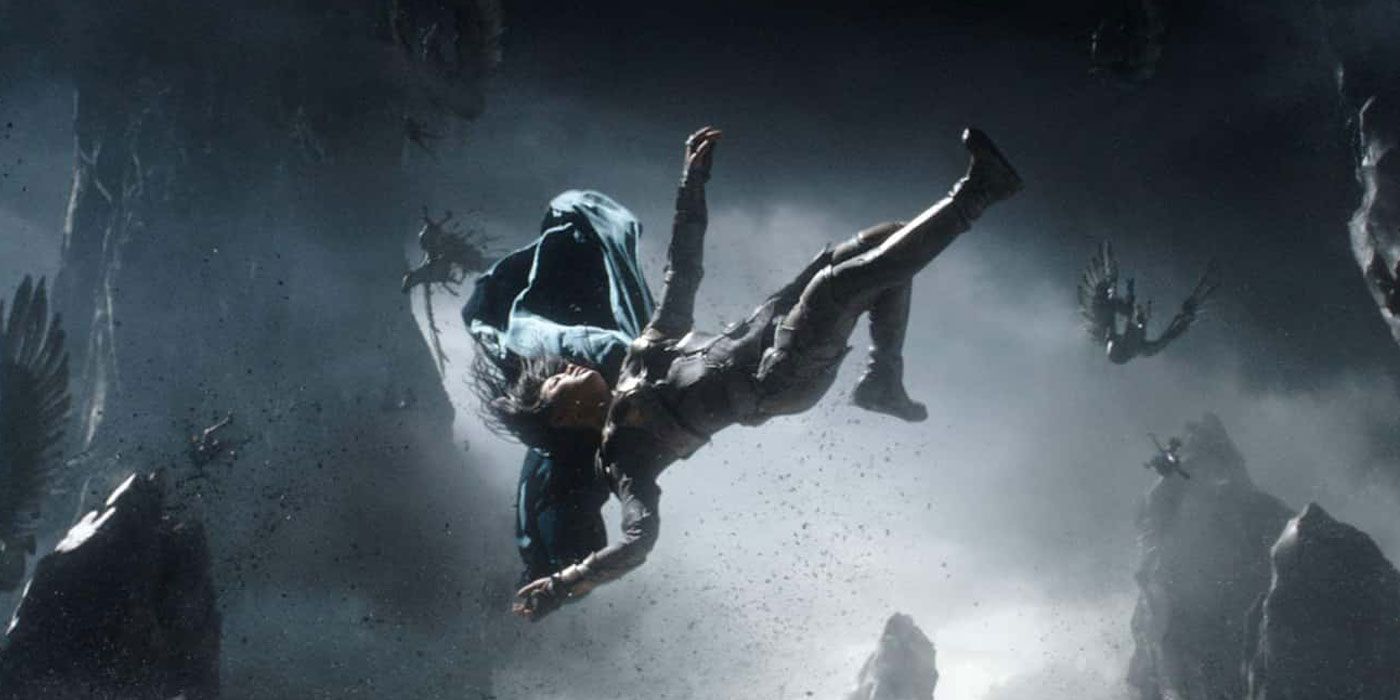Current Disney CEO Bob Chapek has issued a statement promising to champion protections, visibility, and opportunity for LGBTQ+ people but, to do this, Disney will need to work on fixing the representation problems plaguing all of its franchises. Disney has a less-than-stellar track record for queer representation in its media, attracting no shortage of criticism. For a company that produces stories about relatable underdog characters, with strong themes of justice and being true to yourself, Disney can significantly help promote LGBTQ+ rights and work to undo marginalization. If only Disney stories would learn from their mistakes.
Chapek’s statement was made following the backlash caused by the so-called “Don’t Say Gay” bill proposed in Florida, as Disney was called on to do more to support its many LGBTQ+ employees. In a memo (via The Hollywood Reporter), Chapek’s promised to be a stronger ally, apologizing for not being more vocal, and acknowledging that laws like this one are a matter of basic human rights. But Disney has a chequered past with LGBTQ+ representation on-screen. The way to truly commit to Chapek’s words is through media, both movies and Disney+ TV shows.
Disney has begun to address its representation problems, but it has a habit of making the same mistakes over and over. So far, efforts by Disney to improve its LGBTQ+ representation have felt lukewarm at best. This may be an overly cautious approach, as a result of critics who complain that Disney characters shouldn’t be sexualized, but ignores all of the heterosexual Disney characters who already are sexualized, such as Esmerelda from The Hunchback Of Notre Dame or Jasmine from Aladdin. A big problem is that LGBTQ+ issues are often seen as inherently sexual while stories about romance are not. It’s a stigma that limits conversations, and one which Disney, as a company best known for portraying stories about romance, is well placed to help overcome.
Disney’s Core Movies And History Of Representation
Historically, Disney is in an interesting position with representation. All the most famous Disney movies are as recognizable for their villains as they are for their heroes. Some, such as 101 Dalmations, are much more so. Disney villains are brash, larger than life, and immensely charismatic. They are also, for the most part, relentlessly queer coded. This has often been a deliberate creative choice, as with Ursula from The Little Mermaid whose design is largely based on the famous American drag queen, Divine.
Disney isn’t the only company known for queer-coded villains by any means, but Disney villains are certainly among the most iconic in pop culture. As a result, it’s not uncommon to hear older LGBTQ+ people, who grew up watching these movies, speak about how much they related strongly to the villains. The outcast characters, rejected from polite society, who still wholeheartedly embrace their true selves (evil deeds notwithstanding). The pathos which Disney villains hold is probably a large part of why some have even seen redemption stories, such as Maleficent.
Unfortunately, Disney’s efforts to put actual queer characters into their core movies have been notably weak. The 2017 live-action remake of Beauty And The Beast was marketed as having Disney’s first out gay character but, considering the finished product, this claim is baffling in hindsight. The character in question is Gaston’s sidekick LeFou, and using a buffoonish side character whose name literally translates as “The Fool” as token gay representation is already a poor start. The icing on the cake, however, is the fact that LeFou’s handful of canonically gay moments are so brief and understated that they’re easy to miss. Unfortunately, this model – representation in scraps of dialogue and brief scenes which have no impact on the story – is seemingly the Disney standard.
LGBTQ+ Representation In Marvel Movies & Shows
The 2021 Disney+ series Loki canonically confirmed Loki himself as the first bisexual main character in the MCU. This lags behind the comics, in which Loki is canonically neither male nor female, and is referred to as such by Odin. Director Kate Herron rightfully viewed this as an important moment, not only in the show but in the wider MCU mythos, giving the reveal a subdued scene with lighting notably reminiscent of the bisexual pride flag colors. It’s a well-produced scene in a highly enjoyable show but, the problem is, a single line of dialogue is scarcely representation at all.
Loki’s bisexual reveal has had a few vocal critics, notably Russell T. Davies (via NME), the once and future showrunner of Doctor Who and creator of the unashamedly pansexual character Captain Jack Harkness. Harkness serves as an excellent template for how representation can work on-screen, with Doctor Who aimed at a similar age demographic to Disney’s Marvel TV shows. While his sexuality doesn’t have much impact on the plot of the stories he’s in, it’s an integral part of his characterization. Harkness is brash, carefree, and happily flirts with anyone he finds attractive, regardless of whether they’re ladies or gentlemen, or variations thereupon.
Marvel movies have had similarly flimsy representation. It’s a nice gesture for Joe Russo himself to play a gay character in the opening scenes of Avengers: Endgame, but this is ultimately a nameless character who simply tells the audience that he’s gay before never being seen again. Elsewhere, in Thor: Ragnarok, Valkyrie's bisexuality is absent from the final text, making it not officially canon. Even in Eternals, while showing Phastos as a fully formed gay character, the representation feels like an aside to the actual story.
Finn And Poe's Lack Of Romance In Star Wars
Probably the biggest missed opportunity among all of Disney’s franchises comes from Star Wars, with Finn and Poe. The two characters had chemistry right from the very start, leading scores of viewers to speculate about whether the two would be a couple by the end of the trilogy. Both actors repeatedly made choices that hinted that this was where things may be headed. Oscar Isaac was openly in support of the idea when speaking with fans, and John Boyega has admitted that the two of them played up the chemistry on set (via Showbiz CheatSheet).
Sadly, any hopes of a relationship, or even a deeper friendship, were dashed by Finn and Poe sharing relatively little screen time together after the first movie, with Star Wars: The Last Jedi sending them in completely different directions, and Star Wars: The Rise Of Skywalker showing scant interaction between the two. Any relationship between Finn and Poe, romantic or otherwise, could have deep thematic relevance to the story which the Star Wars sequel trilogy was seemingly trying to tell. In The Last Jedi, Poe needs to learn that war and violence have dark consequences, while Finn is a former child soldier with first-hand experience of those consequences. Meanwhile, Finn has never had friends before and needs to learn to trust and find strength in them, something which an outgoing character like Poe Dameron is perfectly placed to teach.
A relationship between two characters like these is a perfect example of how a romance can fit with the themes of a story. This could have been true representation, impacting the central story in a way that makes it essential to the plot. Unfortunately, this is not the story that made it to screen. Instead, the latter two Star Wars sequels repeatedly gave both characters other love interests but no time for any romance subplots. As a result, the only LGBTQ+ representation in the Star Wars sequel trilogy is a blink-and-you’ll-miss-it lesbian kiss between two side characters, which has been edited out in some countries’ releases.
Lightyear's Lesbian Character & LGBTQ+ Representation In Pixar Movies
Due for release in the summer of 2022, Pixar is working on Lightyear, a spinoff of the Toy Story movies. Lightyear features a woman named Hawthorne who is openly lesbian and in a relationship with another woman. The movie promises Pixar’s first on-screen lesbian kiss, but this very nearly didn’t happen. Pixar’s employees have accused Disney of consistently editing queer characters and content out of their movies (via The Mary Sue), saying that Disney orders them to remove nearly every piece of gay affection they’ve tried to include. Considering how Pixar has so far stories that are both relatable and diverse, like Soul and Turning Red, LGBTQ+ characters feel comparatively underrepresented in Pixar stories.
Following the recent uproar, Pixar has been allowed to put back the scene where Hawthorne kisses her girlfriend. This makes Pixar notable for its show of support for the LGBTQ+ community. It's this kind of representation that Disney needs to lean into, rather than shying away from.
What Disney Needs To Do To Fix Its LGBTQ+ Representation
Writers have a saying: Show, don’t tell. While this is more of a guideline than a hard rule, it's also key to providing good representation. Loki simply told the audience, in oblique dialogue, that he’s bisexual, and then it was never mentioned again. But a devil-may-care character like Loki should have shown this instead of just telling it. An occasional lingering glance or snippet of flirtatious dialogue with other characters would have conveyed this much more effectively, and without the need for any pointed reveal.
Another important consideration is how romances are portrayed in media. A romantic storyline, no matter which characters are involved, should be a core part of the plot if it’s to have any meaning. Otherwise, it can easily feel superfluous. This is the difference between the relationships shown in Eternals. Sersi’s relationship with Ikaris is at the heart of the main story, making his betrayal a significant event. By comparison, Phastos’s relationship with his husband is completely separate from the plot. It serves mostly to make Phastos hesitant to join the other heroes in the final battle – despite the fact that wanting to protect the planet that his husband and son live on should be an incredibly strong motivation for him to get involved. It’s weak representation because, for example, if Phastos had become an isolationist hermit instead of having a family, the overall story would not change.
This leads to how a relationship can reinforce the themes of a story, as the characters involved grow and change. This doesn't need to be overt either. Vi and Caitlyn, the lesbian couple in Arcane conveyed a convincing romantic relationship without even sharing a kiss on-screen. Dynamics like this happen often with heterosexual couples. In Star Wars, Han Solo falling in love with Princess Leia is a big part of his choice to join the Rebellion instead of just returning to his life as a smuggler. Anakin Skywalker’s relationship with Padme Amidala is ultimately his big weakness which leads directly to his fall into the dark side. Poe’s relationship with Finn could have been the catalyst to make him knuckle down and grow from a hotshot pilot into a true leader of the Resistance. Unfortunately, that third relationship never happened, and the result was a thematically incoherent Star Wars sequel trilogy ending with characters who are, ultimately, much less than what they could have been.
These criticisms aren’t unique to Disney by any means, centering around much the same issues which beleaguer many movie and TV franchises. However, Disney has placed this burden upon itself in its attempt to become a monopoly, eagerly buying up several of the world’s big names like Lucasfilm and Marvel. As a result, Disney is not only in the exact position to reinforce LGBTQ+ rights in popular media but, as the creators of several of the world’s favorite ongoing sagas, it’s unwittingly become obliged to do so. While it comes late, there is hope on the horizon that Disney might be dragged kicking and screaming into more direct positive LGBTQ+ representation in the near future. Reports suggest that Thor: Love and Thunder will include a major queer storyline for Tessa Thompson's Valkyrie Brunhilde and last year Pixar began casting for their first project fronted by a trans character. Disney has worked hard to gain this much power in the film industry. But with great power comes great responsibility.

